Diagram Of The Solar System
1. The Solar System
In that location are multiple planetary systems present in the universe, and the ane which has the sun as its heart is known as the solar arrangement. From the Latin give-and-take 'Solis,' the proper name solar is derived. Planets, dwarf planets, comets, asteroids, meteoroids, etcetera, celestial bodies brand up the solar system. The sun is nowadays in the Galaxy Galaxy and takes effectually 230 million years to complete one complete round on its screw orbit.
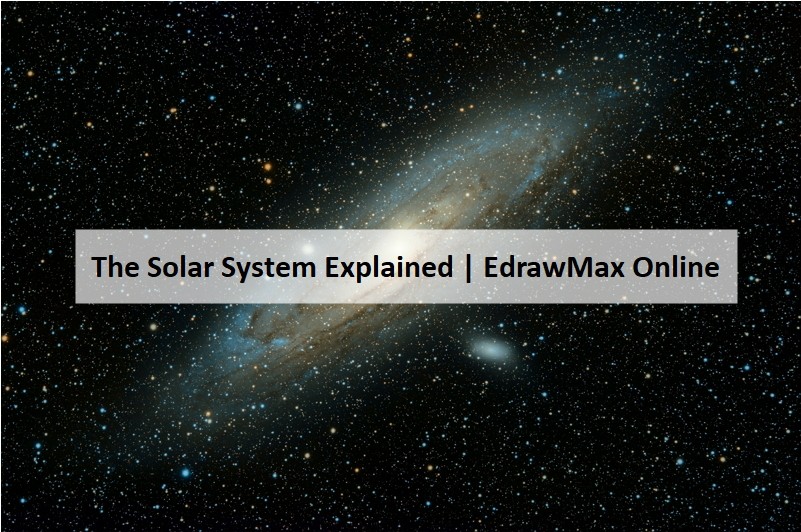
1.one The Classification of Solar Organisation
The lord's day is the center of the solar system and is the site where the hydrogen and helium fusion reaction occurs. It radiates free energy, electromagnetic radiation. Hence, blinding calorie-free comes out of it. The majority portion of the Solar arrangement consists of a near-vacuum, interplanetary medium. The solar flares and coronal mass ejections are the reason behind the geomagnetic storms.
- Inner Solar Arrangement:
- Outer Solar System:
- Comets:
- Trans-Neptunian Region:
- Uttermost Region:
The inner solar system consists of terrestrial planets and asteroid belts. Silicates and metals are mainly in that location in this region. The bodies located in this part of the solar system are closer to the sunday than other regions. The distance of less than 5 AU from the sun makes this inner solar arrangement. The 4 inner planets accept a rocky mural and no band. Therefore, they may or may not take moons. These four planets are Mercury, Venus, Earth, and Mars.
Autonomously from Ceres, other asteroids are called small solar system bodies and consist of rocky and metal components. Asteroids having a size smaller than one meter are named meteoroids and micrometeoroids. Ceres is the largest asteroid and may be called a dwarf planet. Asteroids are classified into asteroids groups and families considering their orbital characteristics.
It consists of behemothic planets, their moons, centaurs, and short-period comets. About planets in this region accept water, ammonia, methane, which stay solid due to the depression temperature. The iv behemothic planets of the outer area are Jupiter, Saturn, Uranus, and Neptune.
Centaurs are icy comet-like entities. They tin be classified as a comet because they as well form blackout while budgeted the sun.
Comets are celestial bodies made of huge volatile ices. They take eccentric orbits and create coma as they enter the inner solar system. One can see their bright, long tail fabricated of dust and gas from the earth. Comets tin can be short-lived (effectually 200 years) or have a long lifetime of thousands of years. Scientists deciphered that the Kuiper belt gives birth to short-lived comets while the long-lived ones generate from Oost Cloud.
The trans-Neptunian region or the 3rd region of the solar organisation lies beyond the orbit of Neptune. This part mainly has the Kuiper belt, Pluto, and other dwarf planets.
Kuiper belt is a belt of debris and ice. The massive object in the Kuiper belt is Pluto. Charon is Pluto's moon and larger than Styx, Zippo, Kerberos, and Hydra. Brand is present in the Kuiper belt and tinier than Pluto, and scattered discs are present in this region. Eris is the massive scattered disc known to date.
The ending signal of the trans-Neptunian region, from where the interstellar space starts, is known as the farthest region. The heliosphere, detached objects, and hypothetical Oort cloud are present in the farthest region of the solar system.
one.2 Composition of the Solar System
The solar system includes 8 planets, and the earth is one of them. They are:
- Mercury: Mercury is closest to the sun without any natural satellite. It has an iron core and a sparse mantle part.
- Venus: Venus is shut, in size, to earth and has the hottest surface temperature due to the greenhouse gases in the atmosphere.
- Earth: Among the inner planets, it is the largest and has the highest density. It has a liquid hydrosphere and air with 21% free oxygen. Plants and animals are present on the world.
- Mars: It is smaller in size than Earth and Venus. Carbon dioxide makes up most of its atmosphere. It has volcanoes and rift valleys, and its natural satellites are Deimos and Phobos.
- Jupiter: It contains hydrogen and helium and has cloud bands and the Groovy Red Spot. It has Ganymede, which is the largest satellite of the solar organization.
- Saturn: Saturn has a large band and 82 natural satellites made of ice.
- Uranus: Uranus is the lightest planet of the outer planets and has an axial tilt of more 90 degrees.
- Neptune: Neptune is slightly smaller than Uranus in size and has 14 moons.
Other than planets, there are moons, and dwarf planets like Pluto, thousands of asteroids, meteoroids, and comets.
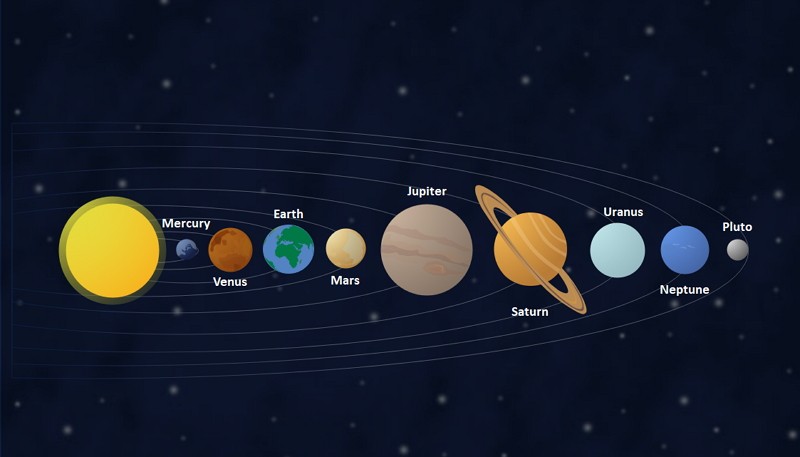 Source:EdrawMax Online
Source:EdrawMax Online
two. How to Draw the Solar System Diagram?
The students must learn most the solar arrangement if they desire to learn more about the planetary system and the earth. They tin can use a solar organization diagram to sympathize the distance of the plants from the sun.
2.1 How to Create Solar System from Sketch
However, it is challenging to create a solar system diagram by hand. The students need to follow these steps to create a solar system diagram past hand:
Step 1: To start with the drawing, they need to create a massive yellow circle at one side of the paper, representing the sunday, the largest celestial body of the solar system. Mercury stays closest to the dominicus and smallest in size. The students need to draw a small circle almost the sun. Just to its correct, they accept to draw a circle sizeable than the smaller one. Now, this is Venus. They can shade information technology with a xanthous-dark-brown colour.
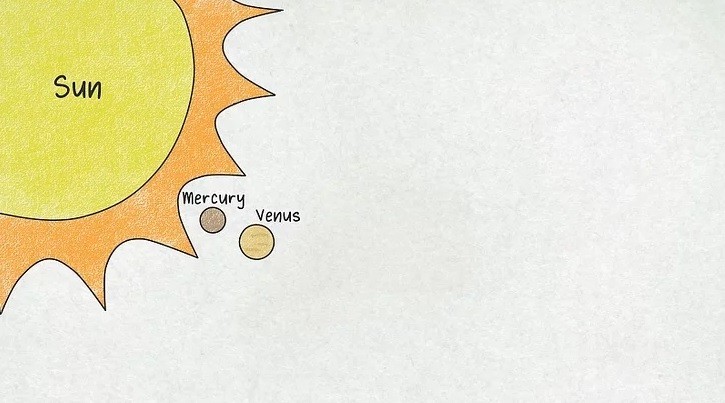
Stride 2: At the right of Venus, depict green and blue shaded globe, enormous than both the previous planets. The students need to create Mars side by side; it is a ruby-red planet present adjacent (on the right side) to world. For this, the students can draw a smaller circumvolve with ruby and orange colors.
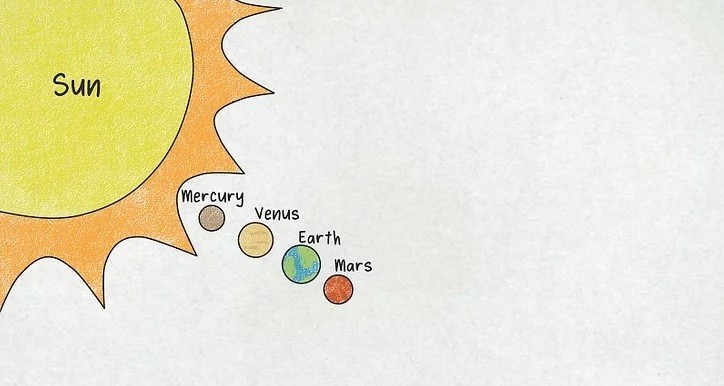
Step 3: Afterwards that, the students need to describe a big circle on the correct side of Mars. This is Jupiter, and it is massive than all the others created and so far. They demand to give it a yellowish-orange shade. Students should now brand a smaller circle on the right side of Jupiter. It is Saturn. It has a pocket-size ring effectually it. They tin can use yellow, greyness, brownish, and orange colors for the planet Saturn.
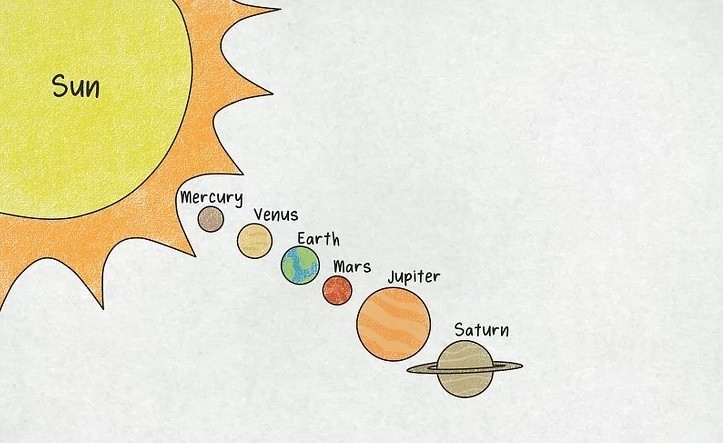
Pace four: The students can draw Uranus with a tilted ring effectually it. It is blue and tinier than Saturn in size. Finally, they take to draw another circumvolve with an inclined ring representing Neptune. They can draw orbits around the planets in an elliptical shape because the sun as the center while starting from and ending at the edges of the page.
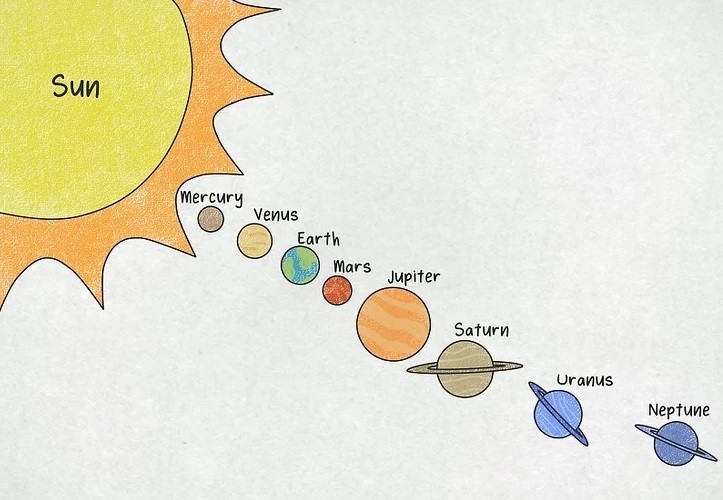
2.2 How to Create Solar Organisation Online
All the same, information technology can be challenging to create a high-quality solar system diagram by mitt. Therefore, the students must use the EdrawMax Online tool. The tool is convenient and can aid them to create a perfect solar organization diagram for their lessons. Hither are a few simple steps which they need to follow:
Step one: To start with the process, the students need to open the EdrawMax Online tool and and so open New. After that, they have to click on the Science and Educational activity tab. Here, they tin can notice a wide range of high-quality diagrams for learning and project works.
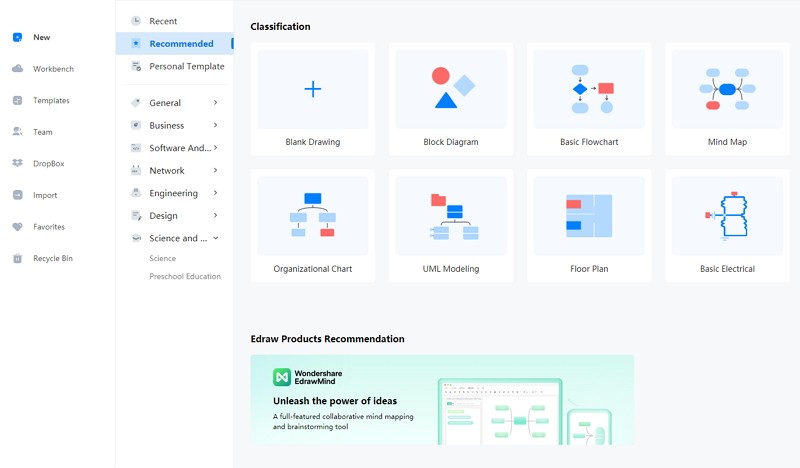
Source:EdrawMax Online
Step ii: To create a high-quality solar arrangement diagram, the students need to select the astronomy option from the Science and Pedagogy tab. So they can edit the solar system diagram as per their selection. It can allow them to create a good quality image for their projects and dissertation papers.
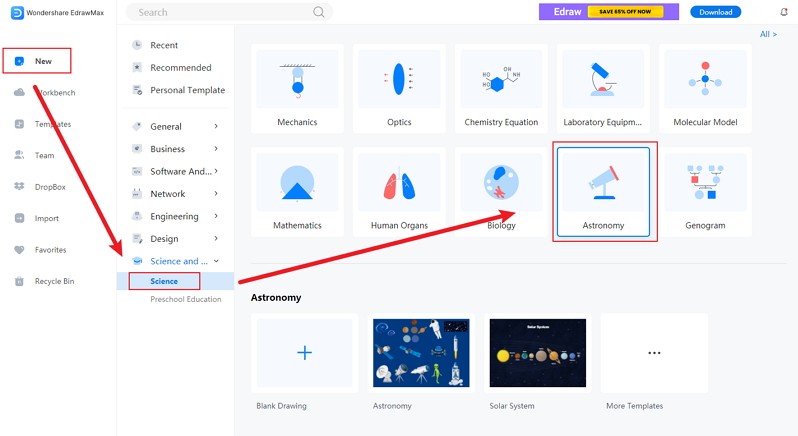
Source:EdrawMax Online
Pace iii: After selecting the template they require, the students should change information technology every bit per their selection. The tool gives the students some hassle-gratuitous options to edit their diagrams. They can work on those images according to their preference to create a high-quality solar organization image.
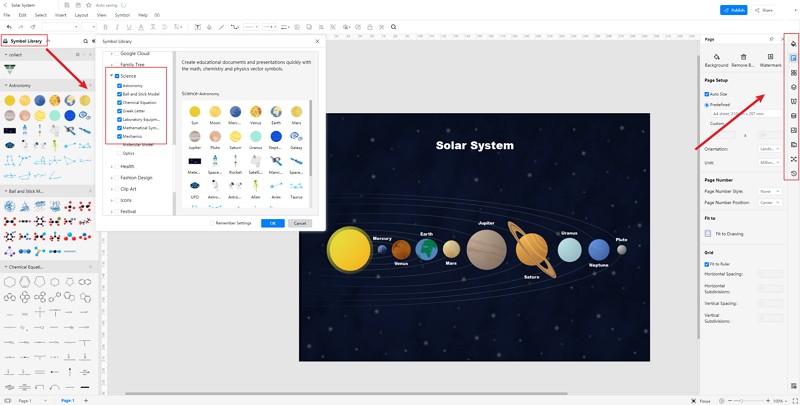
Source:EdrawMax Online
Step 4: Once the students have finished modifying the diagram, they can save it in multiple formats. They can besides consign the solar organisation diagram to use in the future.
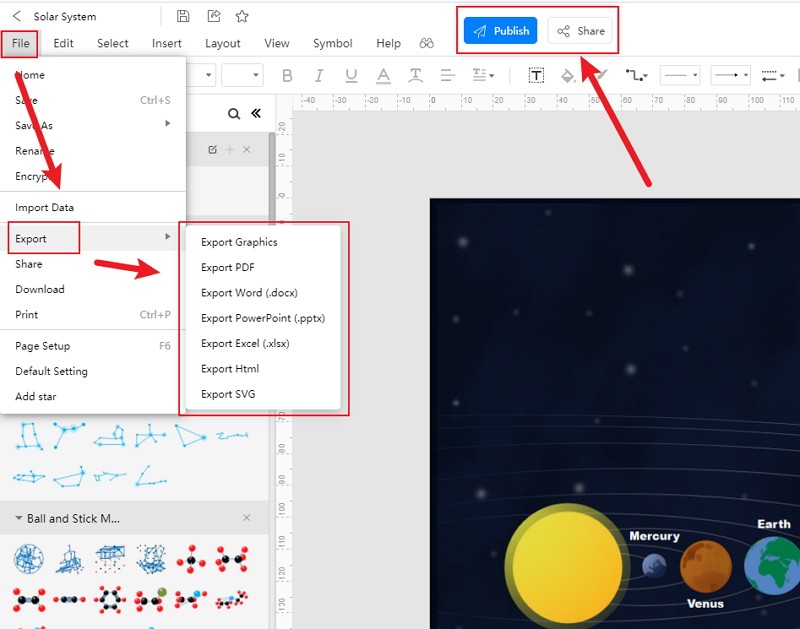
Source:EdrawMax Online
3. Solar Organisation for Kids
Hither are some fun facts for the kids to know:
- There are three different types of galaxies, known equally elliptical, screw, and irregular galaxies.
- Planets and asteroids of the solar system have moons, which exceed the count of 200.
- In 2006, the International Astronomical Union classified Pluto and Eris equally dwarf planets.
- Enormous comets from the Oort cloud are generally invisible to naked eyes. They are only visible as they approach the sun.
- The sun has more than 99% of the elements present in the whole solar system.
4. Determination
The students must accept thorough knowledge well-nigh the solar system. It volition help them know about the sun and other planetary bodies. To employ a solar organisation diagram for studies, they can create one past hand. However, the process is laborious. They can avoid the hassle by using the EdrawMax Online tool, which can assist them describe the perfect solar system diagram.
In conclusion, EdrawMax Online is a quick-commencement diagramming tool, which is easier to make artery and vein diagram and any 280 types of diagrams. Besides, it contains substantial built-in templates that you lot tin can use for free, or share your science diagrams with others in our template community.
Diagram Of The Solar System,
Source: https://www.edrawmax.com/article/a-guide-to-understand-solar-system-with-diagram.html
Posted by: profittconowitied.blogspot.com


0 Response to "Diagram Of The Solar System"
Post a Comment